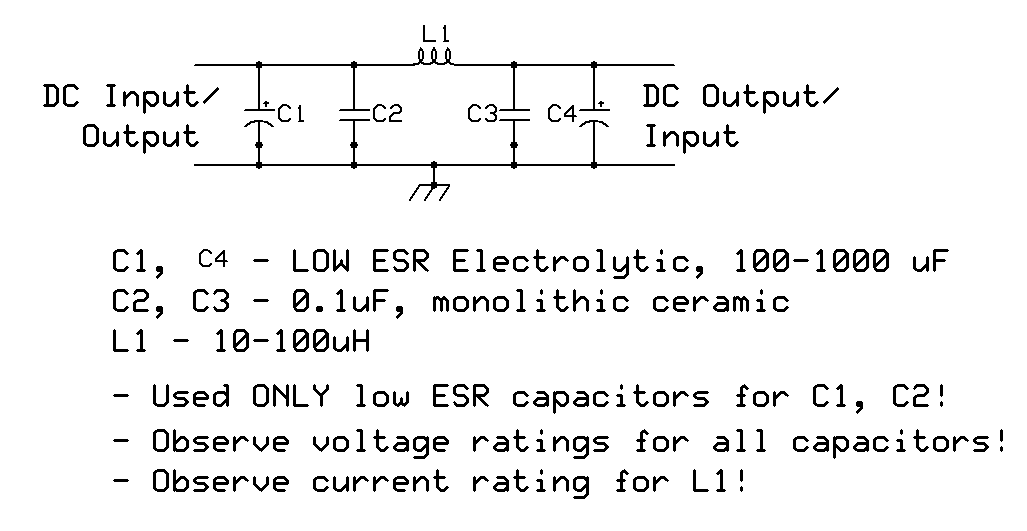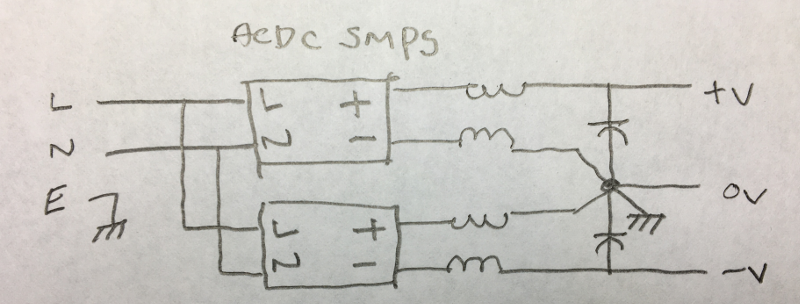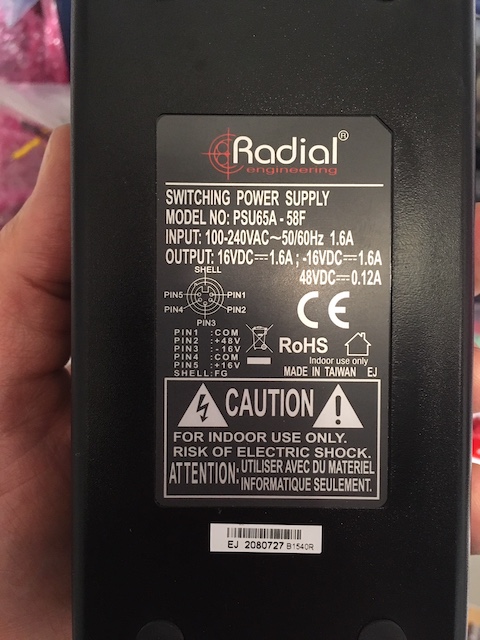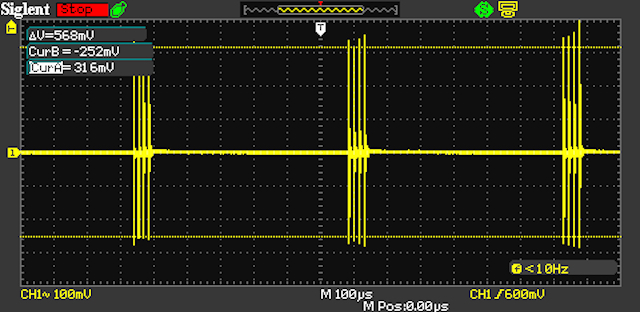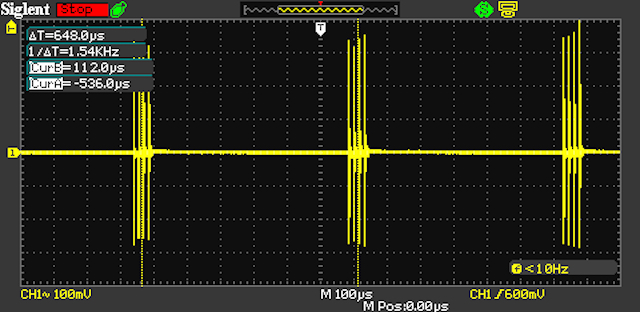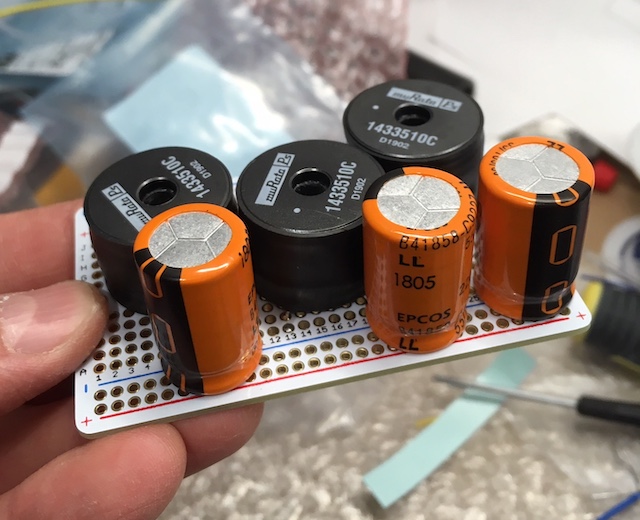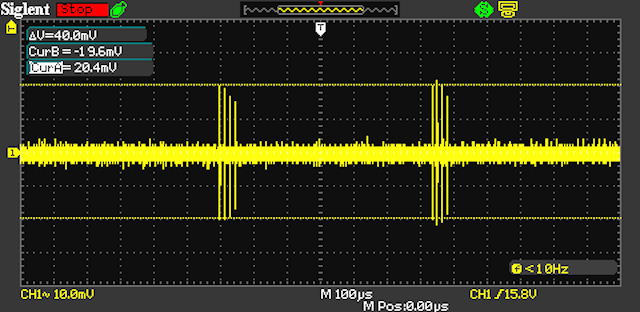Thanks for the comments Squarewave, appreciated. I don't want to open a can of worms about well designed power supplies, &c (I am sure what I am trying to do could be done enormously better in a plethora of ways) but I thought I might try and explain myself. I want to use the 48V supply to generate other voltages. I already have at hand a number of power supply kits (JLM TREX2) that generate two voltage rails from a 48V supply. Budget is tight, I already have a few of these supplies built, so I want to try and use them. For my project (a small mixer) I need 48V, 36V and 24V (as well as the 12V for meter buffers and lamps). There will be something like 20 meters altogether? I was going to have the switch mode supply (and the common mode chokes (and capacitors, if required)) in a box external to the mixer, run in the 48V and 12V to a power distribution center inside the mixer where some of the power supplies are located and then run out voltages (4-core cable: 0V, 48V, 36V, 24V) to modules from there. There will also be a 10r, 470uF RC filter onboard each mic pre module (as required) for the phantom supply. The master section will have its own dedicated TREX2 on board as will the aux returns module (these are being built in rack mountable cases). Some modules do not require 48V (e.g. the master, return and send modules as well as some other line level modules I'm building). Probably would be more elegant just to use a zener drop the 36V to 24V onboard modules as required? At least the trim pots on the TREX2 supplies allow for a reasonable degree of accuracy, and anyway, the die is cast. A 24V line will also be run out of the mic/line module up to a separate router module. It is all pretty low tech with cables and connectors. Everything is being built very modular so I can keep pulling it apart and putting it back together.
I have often read that switch mode supplies prefer to run somewhere around their designated current rating and I am trying to keep this in mind. I have estimated the system current requirements (quiescent current draw for the amplifiers and 10mA for phantom) at maybe just under an amp for the console and slightly more for the meters and buffers? The SMPS will be running at about 40 - 50% of rating? The RID-125-1248 looked like it might work and is cheap enough to give a go.
I have read that phantom supply should be kept separate from other supplies and I am wondering about this. I have a suite of other questions that I still need to answer.
I used something like the RS-25-48 (380mA version) onboard with a TREX2 in a single mic pre eq test module for 48V, 32V and 24V and it worked really well and was very quiet. I guess my thinking was to take the SMPS external to the module, make it bigger, create a distribution network, run cables to multiple modules, and hope a bit. Its all about the journey right?
Apologies for the long-winded post.
